1899 West Winchester Road, Libertyville, IL 60048
Wright. Benny. Ryerson. Bradbury. Sousa. Untermyer. Gurnee. Sheridan. Dunn.
Daniel Wright was the first permanent non-native settler in Lake County. He established good relations with the Native people. Many years later, the Lake County Forest Preserve District honored Mr. Wright by preserving and naming precious land in his honor: Captain Daniel Wright Woods Forest Preserve in Mettawa.
Jack Benny was 39(!), always; and, especially when meeting an attractive young woman. One could argue that he was a hack hunched over a violin or that he could play a mean fiddle. Today, his deadpan humor still helps us break the imaginary fourth wall and put our hand to our face.
Edward L. Ryerson, a successful businessman, built a cabin in 1928 on 28 acres of land that would eventually grow in size another 250 acres. He purchased the adjacent lot to preserve the land. Years later, the entire former cabin retreat would become Edward L. Ryerson Conservation Area in Riverwoods, 561 acres strong.
Ray Bradbury grew up in Waukegan but left his boyhood home with his family after his formative years. He eventually settled in Los Angeles, where he lived the rest of his life, but he never forgot his boyhood town which he fondly called “Green Town”. Mr. Bradbury treasured his formative years in Waukegan as the inspirational source for writing over 600 short stories and 27 novels, his most famous being Fahrenheit 451.
John Philip Sousa was born in Washington, D.C. but spent an important part of his life when he was stationed at U.S. Naval Training Station, Great Lakes during World War I. Mr. Sousa would go on to compose 136 military marches and become known as “The March King”. At the height of his musical career, to support the war effort, Mr. Sousa took the musical directorship of the Great Lakes Band.
Ethel Untermyer moved to Riverwoods from Chicago in the mid-1950s, surprised to find no forest preserves. Who would even think of such a thing then? Ms. Untermeyer led the way, gathering signatures on a petition that would be passed as a referendum on November 4, 1958 to establish the Lake County Forest Preserve District.
Walter S. Gurnee never lived in Lake County but a landmark town bears his name. Mr. Gurnee was a two term mayor of Chicago and a founder of the Chicago Board of Trade. Mr. Gurnee was also president of the Chicago and Milwaukee Railroad, and he was key in stretching the line to Waukegan, and then to Milwaukee.
General Philip H. Sheridan is the inspiration for naming Fort Sheridan, Fort Sheridan Road and Sheridan Road. General Sheridan was a Civil War Cavalry Veteran and in 1883 he became the Commanding General of the United States Army. General Sheridan also led the restoration of order after the Chicago Fire.
Who is Dunn?
Scroll down to see more photos and read more about Bess Bower Dunn Museum of Lake County.
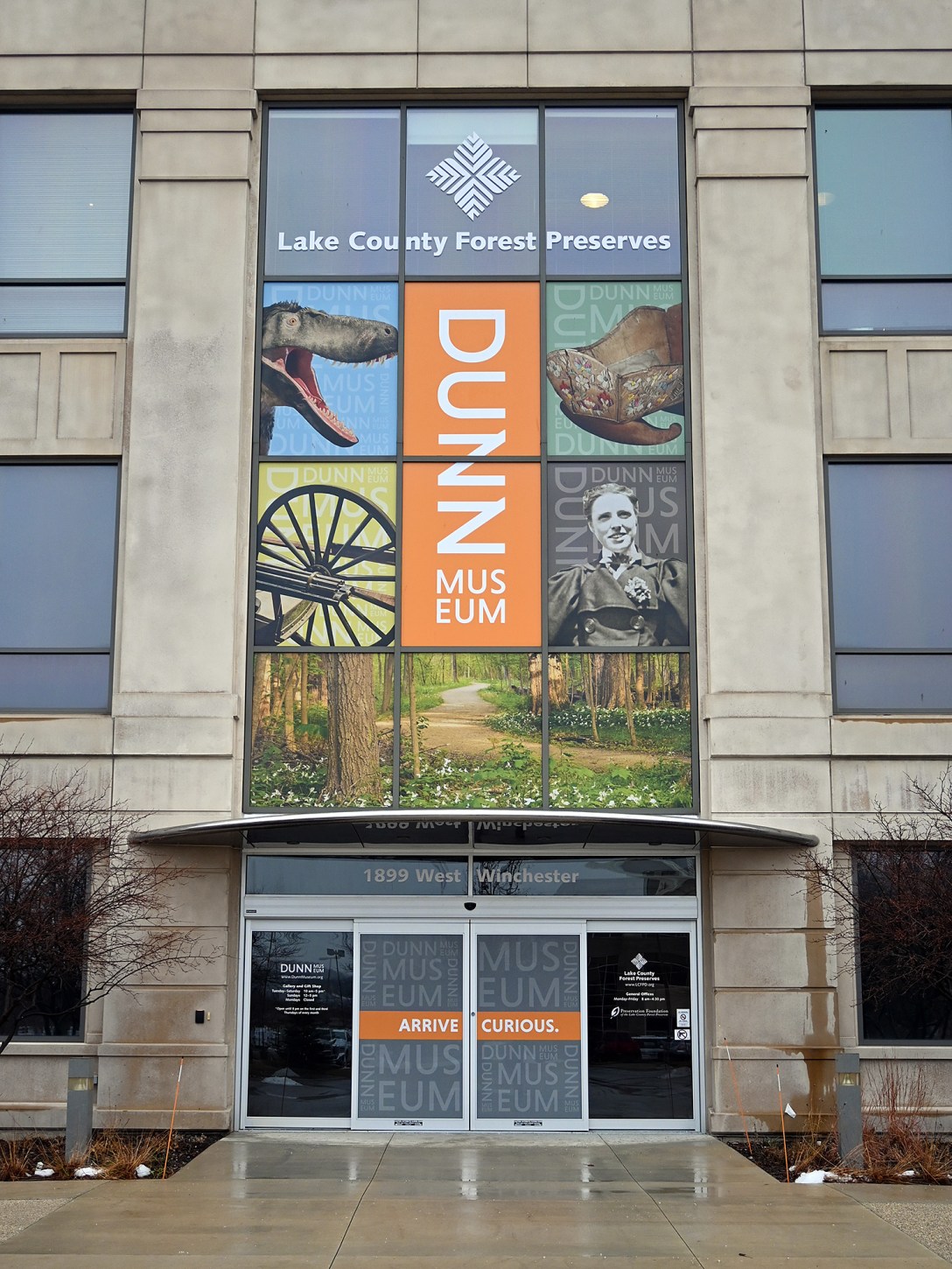



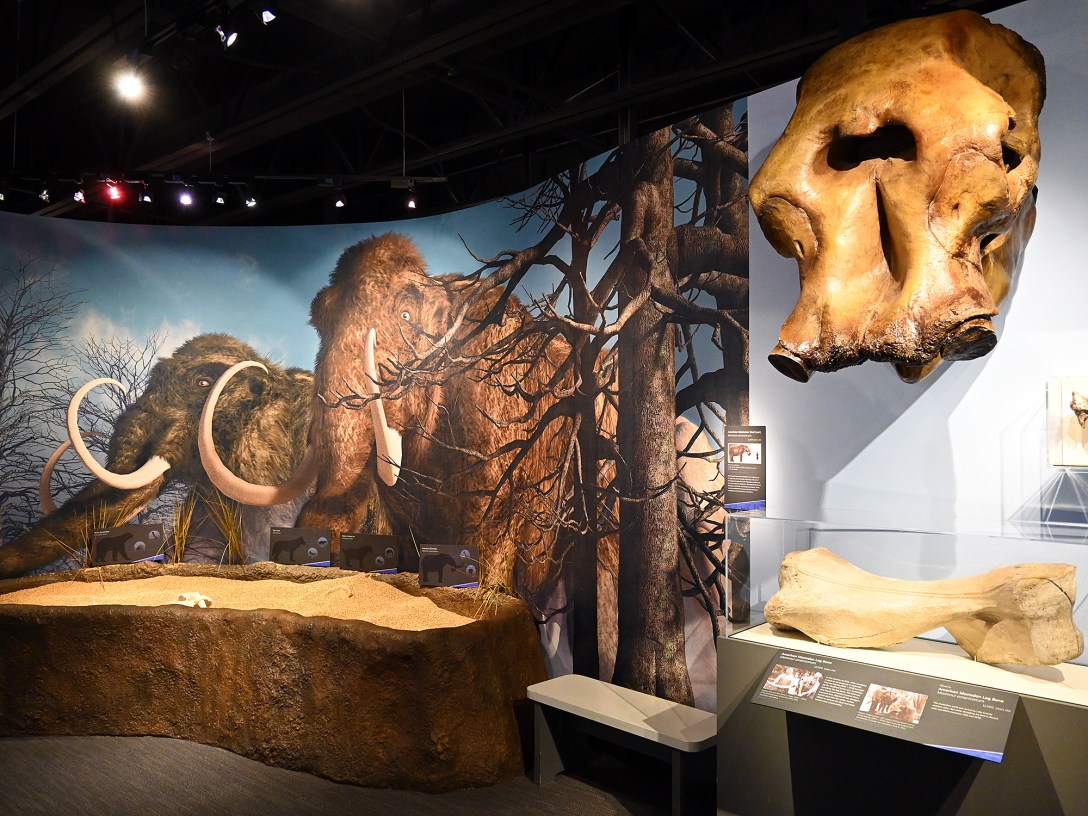





“The name Dryptosaurus means ‘tearing lizard’, which is a reference to the 8-inch claws on each hand.”–Dunn Museum
Lisa and I were present at the opening of the Dunn Museum on March 24, 2018. Over 3,000 people attended, despite the icy rain and raw winds. There was free hot coffee, free cookies and excited visitors as far as the eye could see. This time our visit would be just a little different.
On a weekday morning in mid-January, Lisa and I braved the icy rain and raw winds. There was no free hot coffee and no free cookies, but the few of us who were at the Dunn Museum so early on a Wednesday were excited as far as we could tell.
I was also excited to try a new camera. I’m still learning about the camera, but I’d like to think that the camera is still learning about me since the camera is an extension of the self. I could go on but you might not. You still with me?
The first and most colossal exhibit is the Dunn Museum crown jewel and face of the museum itself, the Dryptosaurus Aquilunguis or Dryptosaur, designed by paleoartist Tyler Keillor. The first thing we noticed, besides its terrible teeth and claws, was the presence of hair or fur along its body in patches. Interesting. We hadn’t turned the first corner yet but my wheels were already spinning.
This led us to the next room which was a gallery of Ice Age fossils, and a massive diorama with an interactive fossil dig site. The presence of such famous Ice Age dinosaur species local to Lake County was eye and mind opening.
“Arrive curious. Leave inspired.”–Dunn Museum
We were treated next to an immersive Potawatomi wigwam, complete with a simulated roaring fire and open canopy with a starry night sky. Local animal pelts and Native cultural samples were on display to gain better appreciation for the people and their history.
As non-native settlers arrived, they began to work the land and germinate industries. Artifacts of agriculture, railroads, education, law, transportation, and war were revealed with every step, everywhere we looked. Everything was displayed in chronological order and grouped together by category. Sensitivity and historical accuracy was well balanced.
I couldn’t believe how far north the Civil War and the Underground Railroad had spread. It made sense since so much of the United States was involved. For such a small area of the country that is Lake County, we overlapped with so much history given our geographical location and emerging economic footprint.
Lisa and I read so many famous names, each belonging to a different area of history. Some of the names are at the start of this blog post. We might have thought that some of those names were just words. They were very important figures; and, without them, there would be no Lake County Forest Preserve District or even a Lake County. Count your blessings and appreciate a free walk through one of many beautiful Lake County Forest Preserves.
We were a little early for the opening of the new special exhibition Reima Ratti: Life and Art in the Great Depression, but we were impressed once again by the permanent exhibits of Dunn Museum. We almost had the entire museum to ourselves. It wasn’t quite a night at the museum, but I swear I could feel General Sheridan’s eyes following me.
“Guests to Potawatomi homes were treated well. They were offered a place to sit and rest and were given food to eat. They were often entertained and given a comfortable place to spend the night.”–Dunn Museum
As we walked to the wall with a quote from Bess Bower Dunn, I couldn’t help but feel how timely her words are today or any day. Who is Dunn? Bess Bower Dunn? Find out a little for yourself in this blog post, then see much more for yourself at Dunn Museum. That’s Bess Bower Dunn Museum of Lake County.




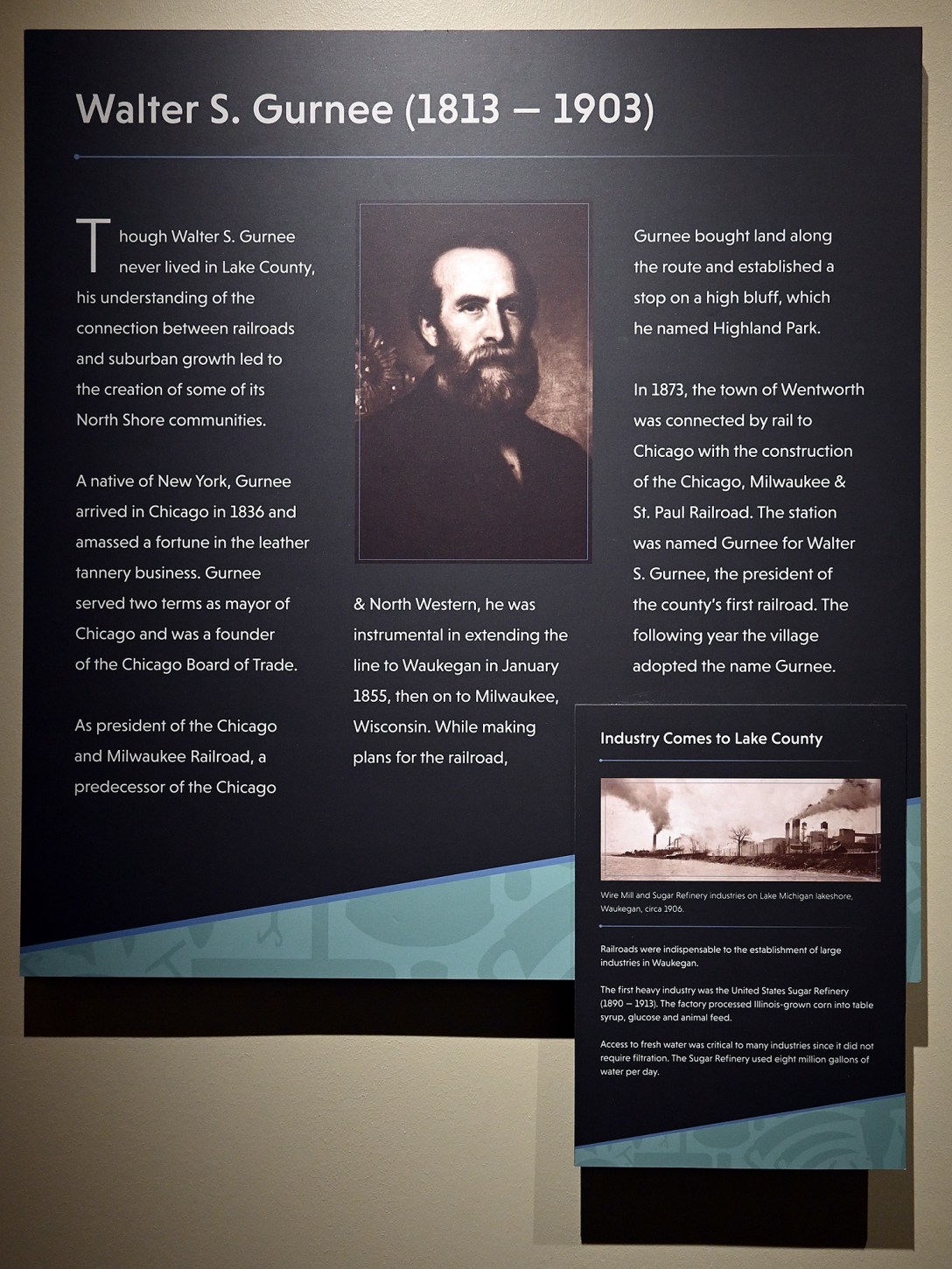
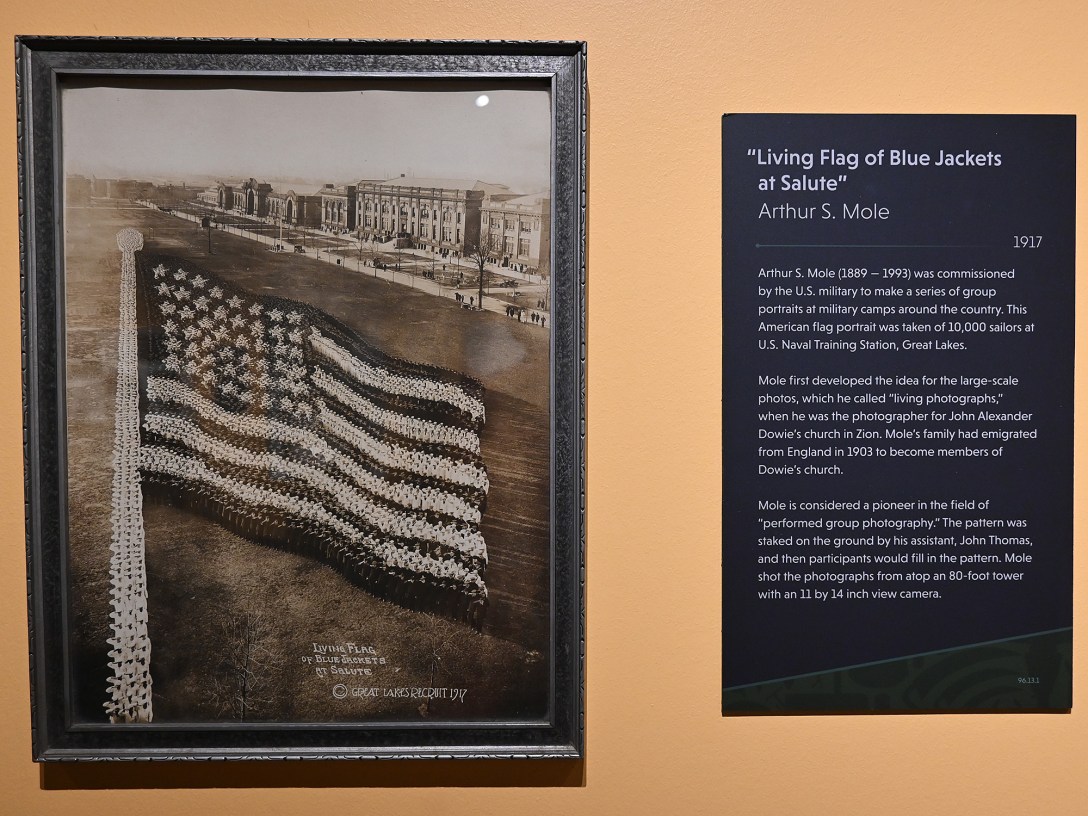
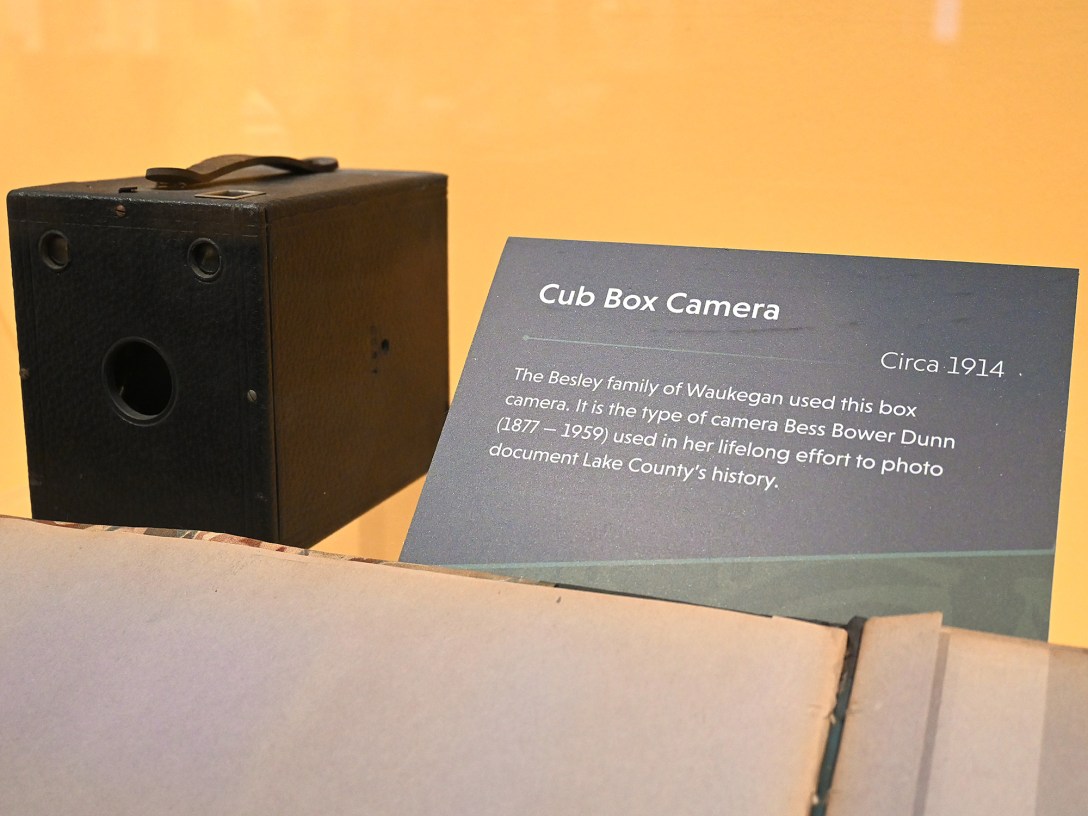




Everytime we visit Bess Bower Dunn Museum of Lake County, we see something new, even if we are looking at the same permanent exhibits, our minds more open with every visit. The special exhibitions change every so often. They are all worth seeing, and probably won’t be seen again.
You can find Dunn Museum at 1899 West Winchester Road, Libertyville, IL 60048. The website for Dunn Museum is Dunn Museum
To experience an amazing dynamic presentation of Bess Bower Dunn Museum of Lake County, click on the link to my Adobe Spark photoblog at Adobe Spark – Dunn Museum
To see more photos of Bess Bower Dunn Museum of Lake County, follow my Instagram page at Instagram – The Simple Luxuries
“My camera is my witness. My blog is my voice.” ©2020
Fascinating place! There is so much history and I love all the interactive videos. It’s a great place to experience and learn about the area.
LikeLiked by 1 person
It’s interesting how much history there is to Lake County!
LikeLike
Have driven past signs for the place often. Definitely going to have to check it out now after your thorough review. Thanks!
LikeLiked by 1 person
You will find it educational and fun too!
LikeLike